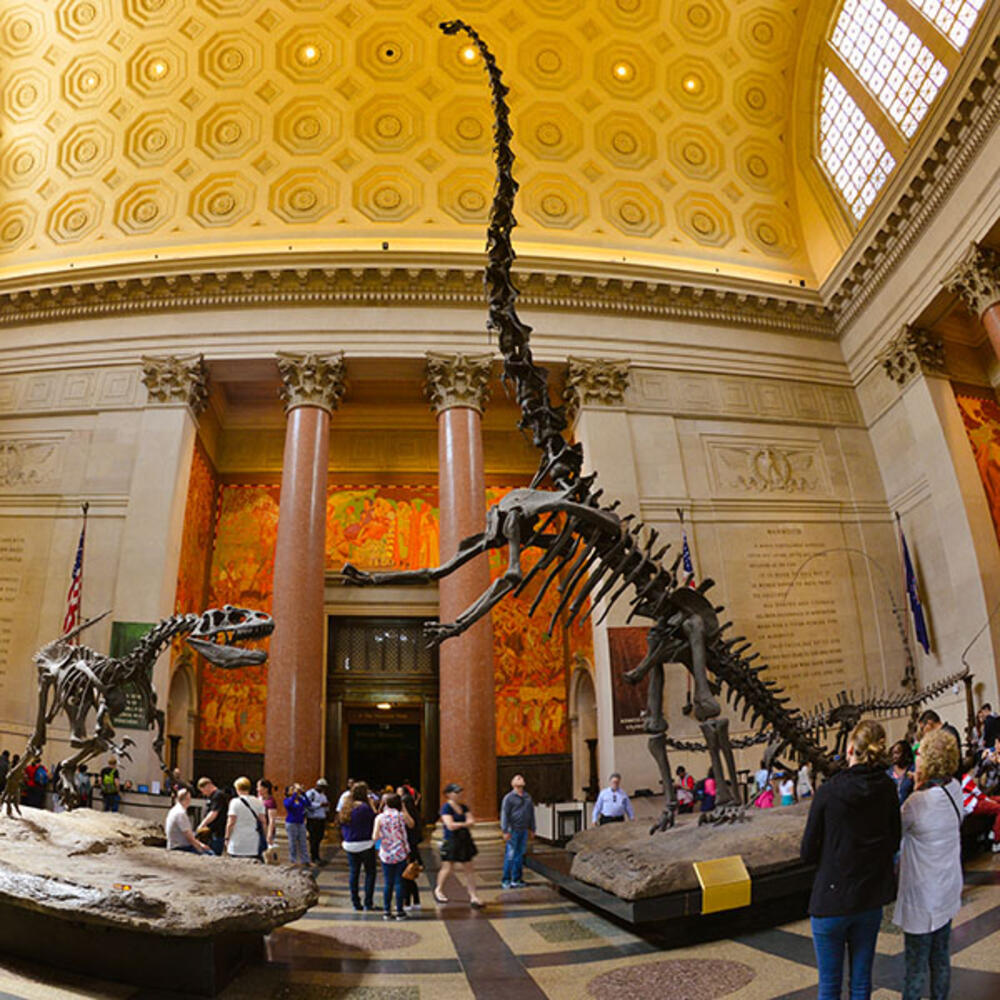Hall of Saurischian Dinosaurs
One of two halls in the David H. Koch Dinosaur Wing, the Hall of Saurischian Dinosaurs displays fossils from one of the two major groups of dinosaurs. Saurischians are characterized by grasping hands, in which the thumb is offset from the other fingers. This hall features the imposing mounts of Tyrannosaurus rex and Apatosaurus.
Branching off the main line are alcoves containing smaller groups of dinosaurs within the saurischian family: theropods, marked by a three-toed foot; tetanurans, which have a three-fingered hand; and finally, coelurosaurs, a group of saurischian dinosaurs with relatively long arms. This group includes maniraptors, whose evolutionary branch extends to birds—the only group of dinosaurs alive today.
In a corridor leading to this hall, video footage and archival photographs explore the history of paleontology at the Museum from the first fossil expedition in 1891 to the present day. On display are a Diplodocus pelvis found in 1897, the first fossil dinosaur specimen collected by Museum researchers; mock-ups of a preparation lab and a fossil site in Mongolia’s Gobi Desert; and a cast of the fossilized remains of a nesting oviraptorid female, found in Mongolia in 1994, which confirmed that some dinosaurs incubated their eggs like modern birds.
This hall is included with any admission.
Enjoy free tickets for General Admission, special exhibitions, giant-screen movies, planetarium shows, and more!
